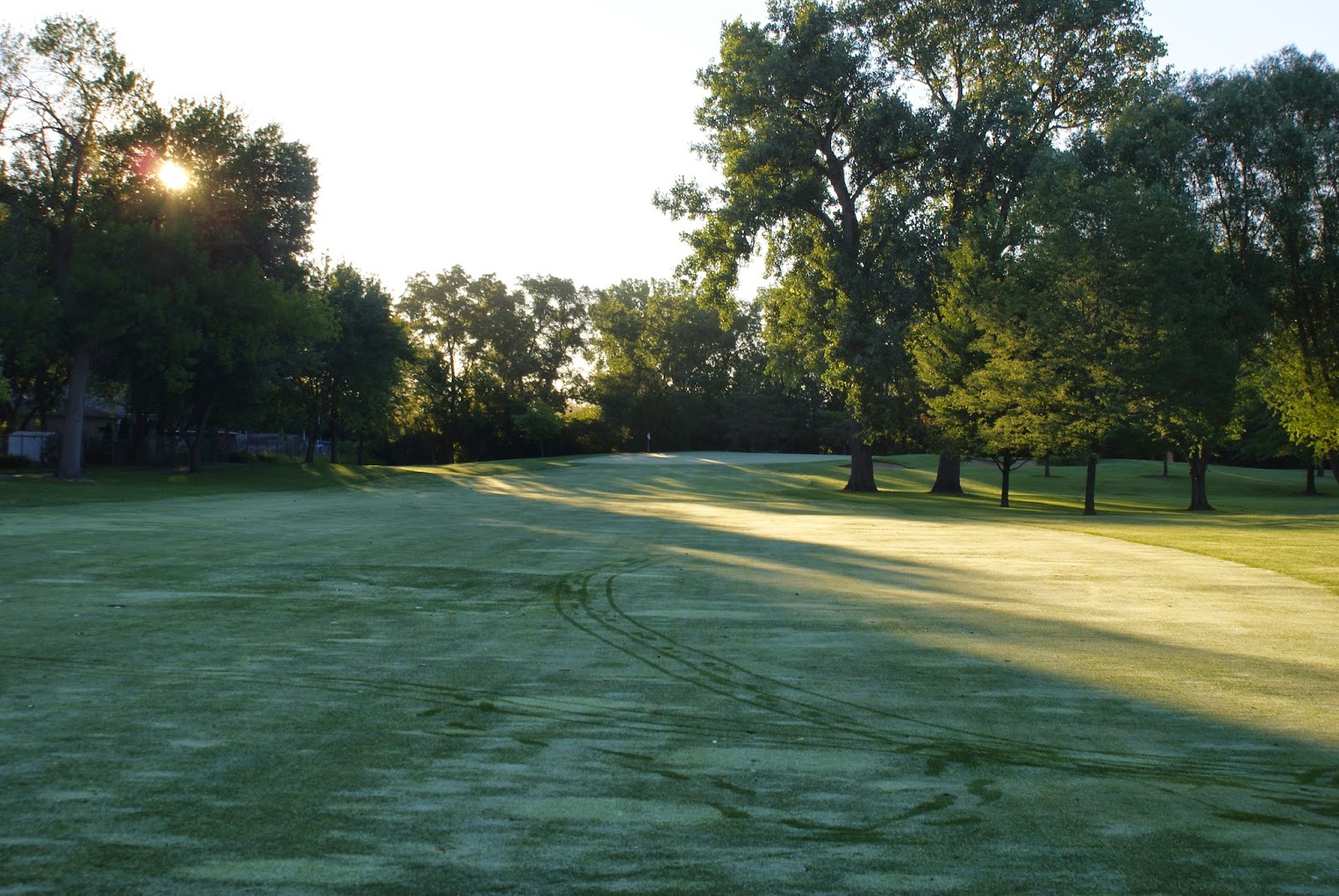The winter of 2013-2014 was tough on turf. The cold temperatures and snowfall lead to a lot of dead
Poa. Many golf courses were left with large areas of dead turf that had to be seeded, sodded, or otherwise coaxed back into playable shape. At Sugar Creek, the rough, greens, and most tees survived the winter fine but the fairways are another story. In areas of shady floodplain, solid layers of ice sometimes a foot thick formed and eventually suffocated the
Poa annua that calls these areas home. After a lot of aerifying (3 times), slit-seeding, levelling, watering, and sodding, the fairways were almost 100% filled in by the end of May. I'll be the first to admit that Mother Nature did most of the work -- we can't do anything without the right temperatures, moisture levels, and sunlight to grow plants -- but we significantly sped up the process and made some progress against
Poa.
Here are some pictures from the last 3 months that dramatically illustrate the recovery:
 |
| 7 Fairway - April 12, 2014 |
Here you can see some of the creeping bentgrass we have been able to get growing after the floods in 2010 and 2013 (and the heat wave in 2012). Everything green in the fairway is bentgrass. Everything brown is
Poa annua.
 |
| 7 Fairway - April 12, 2014 |
 |
| 7 Fairway after slit-seeding - April 25, 2014 |
Below you can see the fairway filling in with new seedlings. We wish they were all bentgrass seedlings, but many are coming from the dormant Poa annua seedbank in the soil. At this point, you take what you can get!
 |
| 7 Fairway filling in - May 30, 2014 |
And below is now. You can tell we had moderate temps and a lot of rain recently!
 |
| 7 Fairway - June 27, 2014 |
7 Fairway from the reverse angle:
The first fairway suffered similar damage but not as extensive. As an experiment, we slit-seeded T-1 creeping bentgrass when it was still very cold at the end of March and had seed coming up in April. It filled in quickly after that.
 |
| Slit-seeding germination - April 25, 2014 |
These photos were taken of the 1st fairway toward the tee:
































